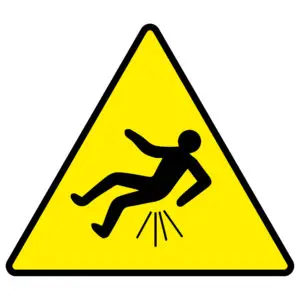Slip & Fall Lawsuits: What You Need To Know
A civil lawsuit can be filed by the victim of a slip and fall accident. This legal complaint is filed against the party whose negligence resulted in the accident. The difficulty with slip and fall lawsuits is that it is very hard to prove that the negligent party knew, or should have known about the hazard that caused the fall.
What Is Considered A “Reasonable” Amount Of Time For Property Owners To Check For Hazards?
This is a question that is impossible to answer without reviewing a specific case. Since no two properties are exactly alike, what is considered reasonable will vary greatly from location to location. For example, it would be much easier for a large corporation with hundreds of employees to regularly check a 4-story building than it would be for a solitary farmer to check hundreds of acres of land.
What Evidence Can Help To Prove A Slip And Fall Case?
When we work on a slip and fall case, we recommend that our clients keep every potential piece of evidence. This may include:
- Insurance Paperwork
- Photographs Of The Hazard
- Photographs Of The Injuries
- Medical Records
- Witness Contact Information
As silly as it may sound, we also recommend that you keep a journal which can speak to your state of mind and that will record the exact dates and times of any contact that is made with the involved parties.
Should you choose to work with our legal team, our lawyers will also work hard to collect any other evidence that might be vital to the case. Additionally, we work with industry experts who may testify on our client’s behalf.
How Much Is A Slip And Fall Lawsuit Worth?
Slip and fall settlements and verdicts are based on the actual losses sustained by an individual client and so no two outcomes are exactly the same. However, settlements and verdicts are intended to cover monetary losses such as medical bills and lost wages, as well as non-monetary losses such as physical pain and emotional distress.
What’s The Difference Between A Settlement And A Verdict?
A settlement is negotiated out of court. The majority of civil lawsuits end with a settlement and there are benefits – typically the plaintiff receives payment within 30 days, avoids going to court, and knows exactly what they are getting.
However, in some cases, a settlement can’t be negotiated and these cases go to court. When a jury or judge sides with a plaintiff, they award a verdict. The plaintiff can ask for a certain amount, however, that amount isn’t guaranteed. Additionally, the defendant can appeal the decision.
Schuster Jachetti LLP: Experienced Slip And Fall Lawyers
If you or a loved one are interested in learning more about your legal options after a slip and fall, contact our experienced attorneys. We offer free consultations during which we will review your case and explain all of your legal options.
There are strict timelines associated with filing slip and fall lawsuits so don’t hesitate to call now.
 property owners must make checks of their land and buildings for potential hazards. These checks must be made a “reasonable” intervals. If a hazard is discovered, it must be fixed immediately or warning signs need to be placed around it.
property owners must make checks of their land and buildings for potential hazards. These checks must be made a “reasonable” intervals. If a hazard is discovered, it must be fixed immediately or warning signs need to be placed around it.
